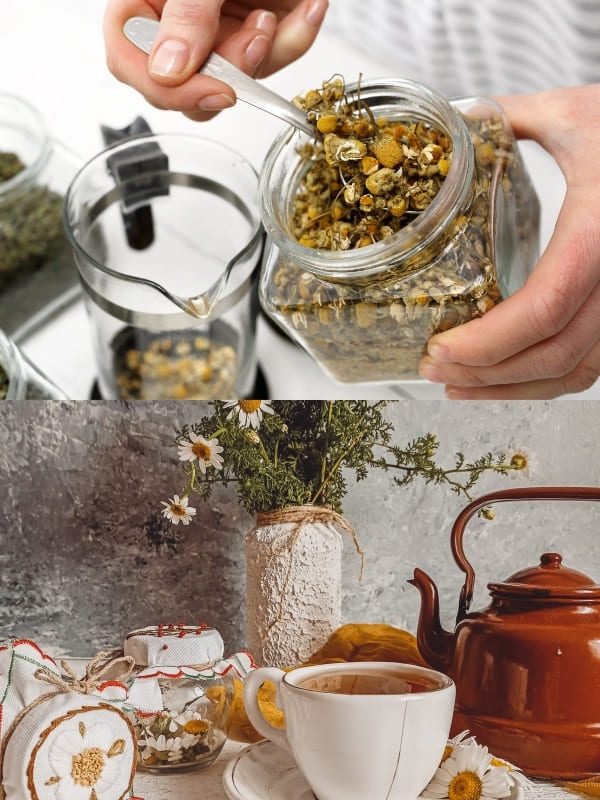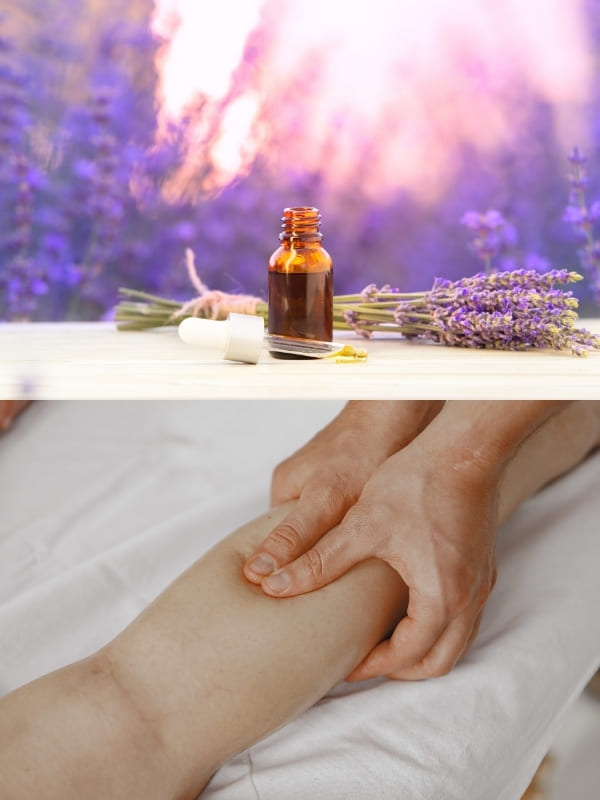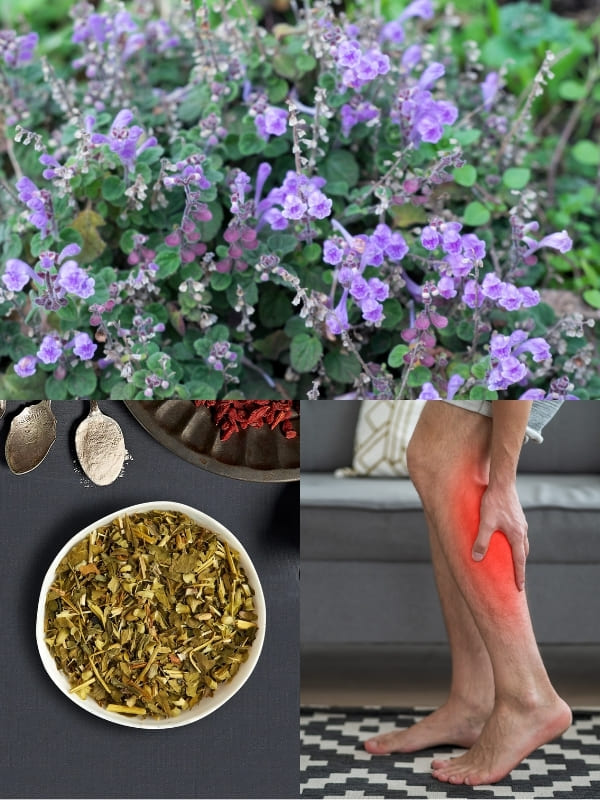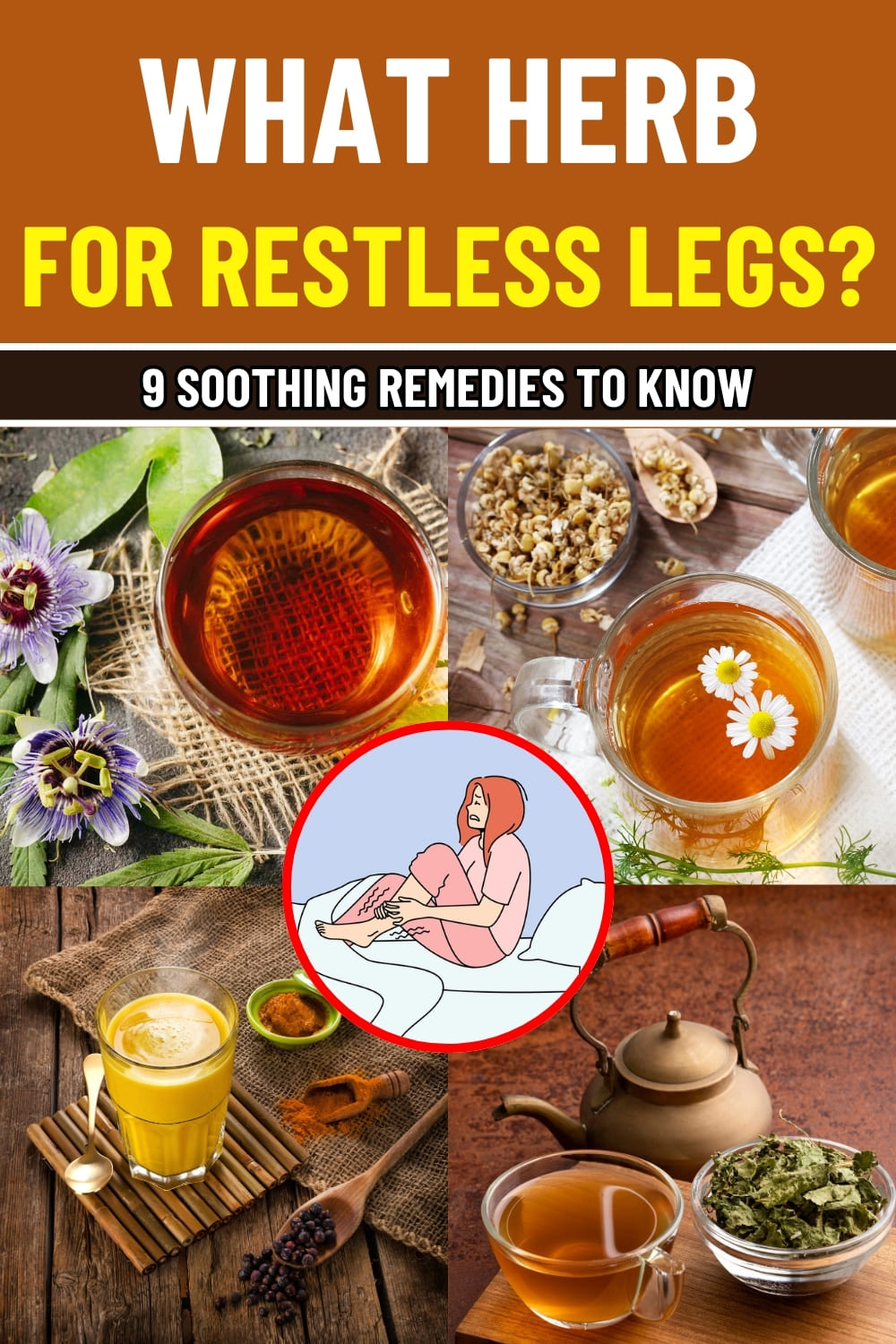If your legs feel like they’ve got a mind of their own, twitching, tingling, or dancing under the covers while the rest of you begs for sleep, you might be dealing with Restless Leg Syndrome (RLS).
It’s more than just a minor annoyance. It’s a sleep thief, an energy drainer, and, for many people, an every-night battle.
While prescription treatments exist, more and more people are turning to herbs for Restless Leg Syndrome to calm the nerves, reduce discomfort, and support natural sleep cycles.
And it’s no surprise certain herbs offer gentle relief without side effects, making them an ideal option for those seeking a holistic path. Ready to kick the twitch and settle into real rest? Let’s dive into nature’s remedy chest.

1. Valerian Root: The Natural Sleep Synchronizer
Valerian root has long been hailed as nature’s sedative, and for good reason. It promotes relaxation, calms the nervous system, and eases muscle tension, making it a strong ally against RLS.
Why It Works:
A study in Phytomedicine found that valerian improved sleep quality and reduced leg movement during sleep. It contains valerenic acid, which interacts with GABA receptors in the brain, promoting calm and reducing involuntary nerve signals.
How to Use:
First, steep 1 teaspoon of dried valerian root in hot water for 10–15 minutes. Then strain and drink about 30 minutes before bedtime. For stronger results, drink nightly for at least 2–3 weeks.

2. Passionflower: Soothes the Nerves and Calms the Body
Passionflower doesn’t just have a dreamy name; it’s a proven remedy for reducing nervous energy and calming muscle twitching.
Why It Works:
According to a study published in Anesthesia & Analgesia, passionflower increases GABA in the brain, lowering neural excitability. It also helps relax muscles, reduce spasms, and support deeper sleep, ideal for restless legs.
How to Use:
Next time you feel symptoms, brew a cup of tea by steeping 1–2 teaspoons of dried passionflower in hot water for 10 minutes. Drink 1–2 cups per day, especially before bed, to support nervous system regulation.

3. Chamomile: Gentle Relief and Muscle Relaxation
Chamomile is widely known for its calming effects, but it also contains apigenin—a compound that binds to benzodiazepine receptors in the brain, helping reduce anxiety and muscle cramps.
Why It Works:
A 2016 study in Complementary Therapies in Medicine confirmed chamomile’s mild sedative effect and ability to improve sleep quality. It also has anti-inflammatory properties that may soothe nerve irritation, triggering RLS.
How to Use:
Steep 1 tablespoon of dried chamomile flowers in hot water for 5–7 minutes. Sip before bed. Add a splash of oat milk or honey to deepen the soothing effects.

4. Lavender: Aromatic Calm and Neuromuscular Relief
Lavender is often used for its scent, but its internal and external uses can ease muscle tension, calm the mind, and promote restful sleep.
Why It Works:
A 2014 study in the Journal of Nursing and Midwifery Studies showed that lavender oil aromatherapy improved sleep in women with RLS. Its compounds, like linalool and linalyl acetate, calm overactive nerves.
How to Use:
Add 2–3 drops of food-grade lavender oil to herbal teas, or massage your legs with diluted lavender oil before sleep. For an aromatic twist, sprinkle dried lavender into a sleep pillow.

5. California Poppy: The Mild Nerve Relaxer
California poppy is a gentle herbal sedative with antispasmodic properties that help calm overactive legs without leaving you groggy.
Why It Works:
It contains alkaloids like californidine that support nervous system balance and reduce minor aches. Research from Evidence-Based Complementary and Alternative Medicine noted its usefulness for neuropathic discomfort.
How to Use:
Steep 1 teaspoon of dried California poppy in hot water for 10 minutes. Drink once daily before bedtime, not exceeding the recommended dose due to its sedative effects.

6. Magnesium-Rich Nettle: The Muscle Supporter
Stinging nettle may not seem gentle, but when brewed, it becomes a mineral-rich tonic loaded with magnesium, calcium, and iron crucial for soothing muscle irritability.
Why It Works:
Magnesium deficiency is often linked with muscle spasms. According to the National Institutes of Health, nettle’s mineral content supports neuromuscular health and may reduce restless sensations.
How to Use:
Steep 1 tablespoon of dried nettle leaves in boiling water for 10 minutes. Drink twice daily. You’ll notice results after about a week of consistent use.

7. Skullcap: A Nervine Tonic for Twitching Legs
Skullcap has long been used to calm nerves, especially in cases of physical agitation or nighttime restlessness.
Why It Works:
A 2003 study in the Journal of Ethnopharmacology identified flavonoids in skullcaps that bind to GABA receptors, supporting reduced nerve excitability and involuntary movement.
How to Use:
Steep 1 teaspoon of dried American skullcap in hot water for 10 minutes. Drink in the evening. Use consistently for 2–3 weeks to see long-term effects.

8. Turmeric and Black Pepper Combo: Inflammation Fighter
This golden pair doesn’t just spice up your dinner. It reduces inflammation that may irritate nerves and muscles, contributing to RLS.
Why It Works:
Curcumin (in turmeric) has anti-inflammatory effects, while piperine (in black pepper) enhances absorption. The Journal of Medicinal Food highlighted this duo’s ability to reduce chronic nerve-related inflammation.
How to Use:
Mix ½ teaspoon of turmeric with a pinch of black pepper in warm milk or herbal tea. Drink nightly, especially if inflammation seems to trigger your RLS.

How to Incorporate These Herbs into Your Daily Routine
Building an herbal routine for RLS doesn’t have to feel overwhelming. Start by choosing 1–2 herbs that resonate with your symptoms.
A bedtime tea is a great place to begin, especially with blends like valerian and passionflower or chamomile and lavender. Consistency is key: most herbs show cumulative effects when taken regularly for at least 2–4 weeks.
You can also create a “sleep ritual”:
- Sip herbal tea an hour before bed
- Apply diluted lavender oil to your legs
- Use a calming foot soak with chamomile or nettle
- Keep a warm turmeric drink as part of your nighttime wind-down
Pair this routine with better sleep hygiene, limit caffeine, keep a cool bedroom, and avoid screen time close to bedtime to get the best results from your herbal support.
Cautions and Precautions
While herbs are generally safe, some may cause allergic reactions or interact with medications. For example, valerian and skullcap can intensify sedatives.
Pregnant or breastfeeding individuals should avoid California poppy and strong nervines like valerian unless approved by a professional.
Start with small doses to check for sensitivity. If you experience headaches, drowsiness, or digestive upset, stop using and consult a healthcare provider.
Avoid combining too many sedative herbs at once, especially if you’re already on sleep aids or antidepressants.
Disclaimer
This article is for informational purposes only and does not replace medical advice. Always speak with your healthcare provider before starting herbal remedies, especially if you have ongoing health concerns or take prescription medications.

9 Little-Known Herbs for Restless Leg Syndrome Backed by Science
